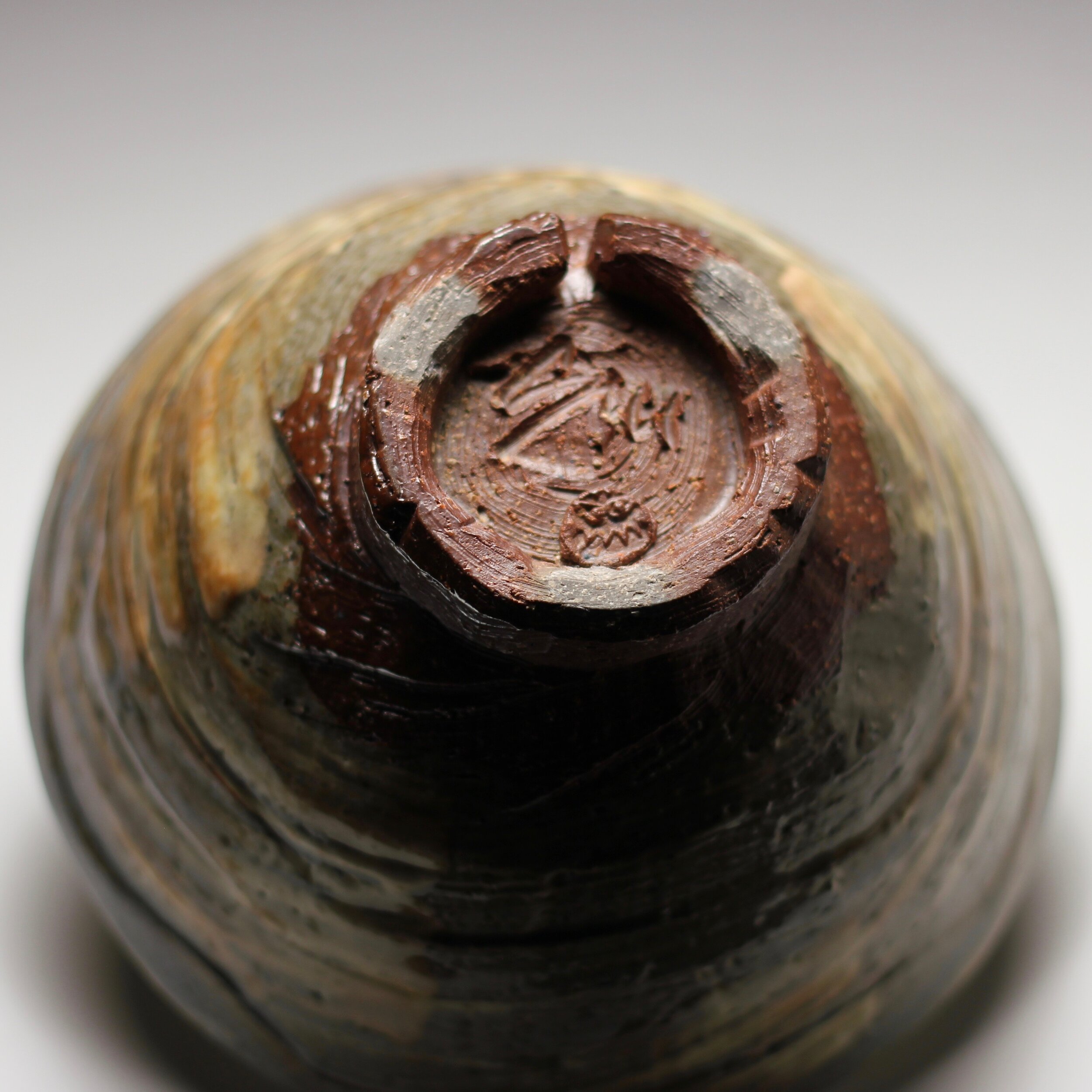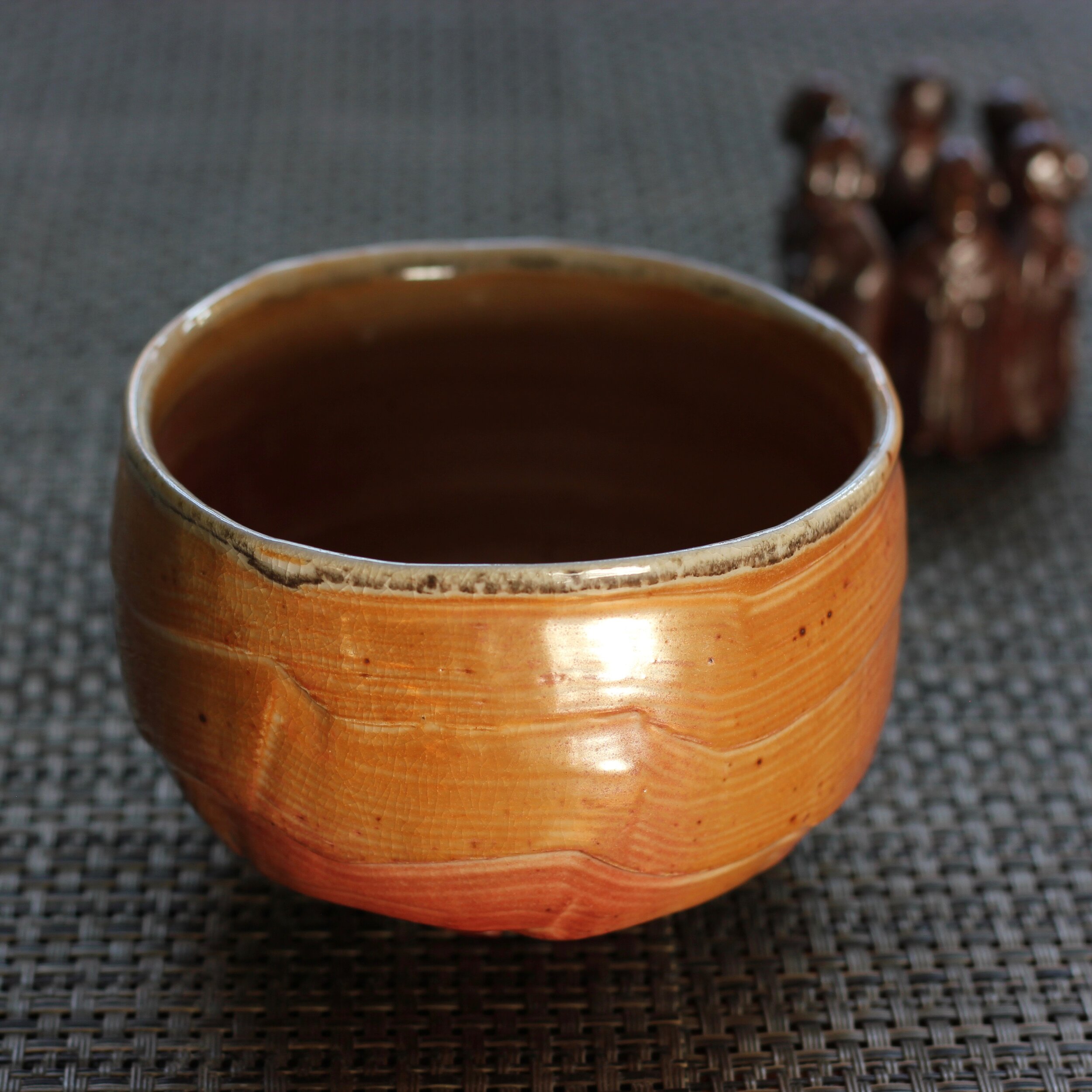T E A B O W L S
What makes a bowl right for tea ceremony? It’s size and shape, how it balances in the hand, how the tea whisk moves in the bowl -- these are all considerations for tea.
• • • • •
Summer Tea Bowl
Wheel-thrown stoneware, ash-glaze, wood fired, 3h x 5.5w, private collection
• • • • •

C H A N O Y U
Chanoyu is the highly ritualized Japanese Tea Ceremony. It dates as far back as the 9th Century. This formal practice went beyond sharing a bowl of tea. Instead, cha no yu is a rite where all the details of making and serving and drinking tea are celebrated.
From the sound of the water boiling to its silence as a ladle of cold water is added to the tea pot -- to the turning of the bowls before and after serving -- to the placement of the ladle and whisk -- all these details were perfected over centuries of practice. The Samurai and ruling class of ancient Japan took part in chanoyu as a cultural phenomenon that showed off their wealth and taste. Rikyu, founder of the Urasenke school, codified tea in the 1600s and made it popular with everyone.
Aesthetic standards for tea ceremony are high. The ritual allows guests to take a moment to carefully examine and admire the bowl after drinking their tea. By doing so, they give honor to their host…and the potter.
Tea Bowl 1
Wheel-thrown and carved stoneware, tenmoku glaze with applied ash,
reduction fired, 3.5w x 4.5w, private collection
• • • • •
Tea Bowl 2
Ido Jawan style, wheel-thrown and carved stoneware, white Korean clay slip, cedar-ash glaze, kiln atmosphere induced fire blossoms, 3.5h x 6w


Tea Bowl 3
Wheel-thrown and carved, white slip, ash glaze,
soda-fired, 3.5h x 6w, private collection
• • • • •
Tea Bowl 4
Wheel-thrown and carved stoneware, shino-glaze,
wood fired, 2.75h x 4w














